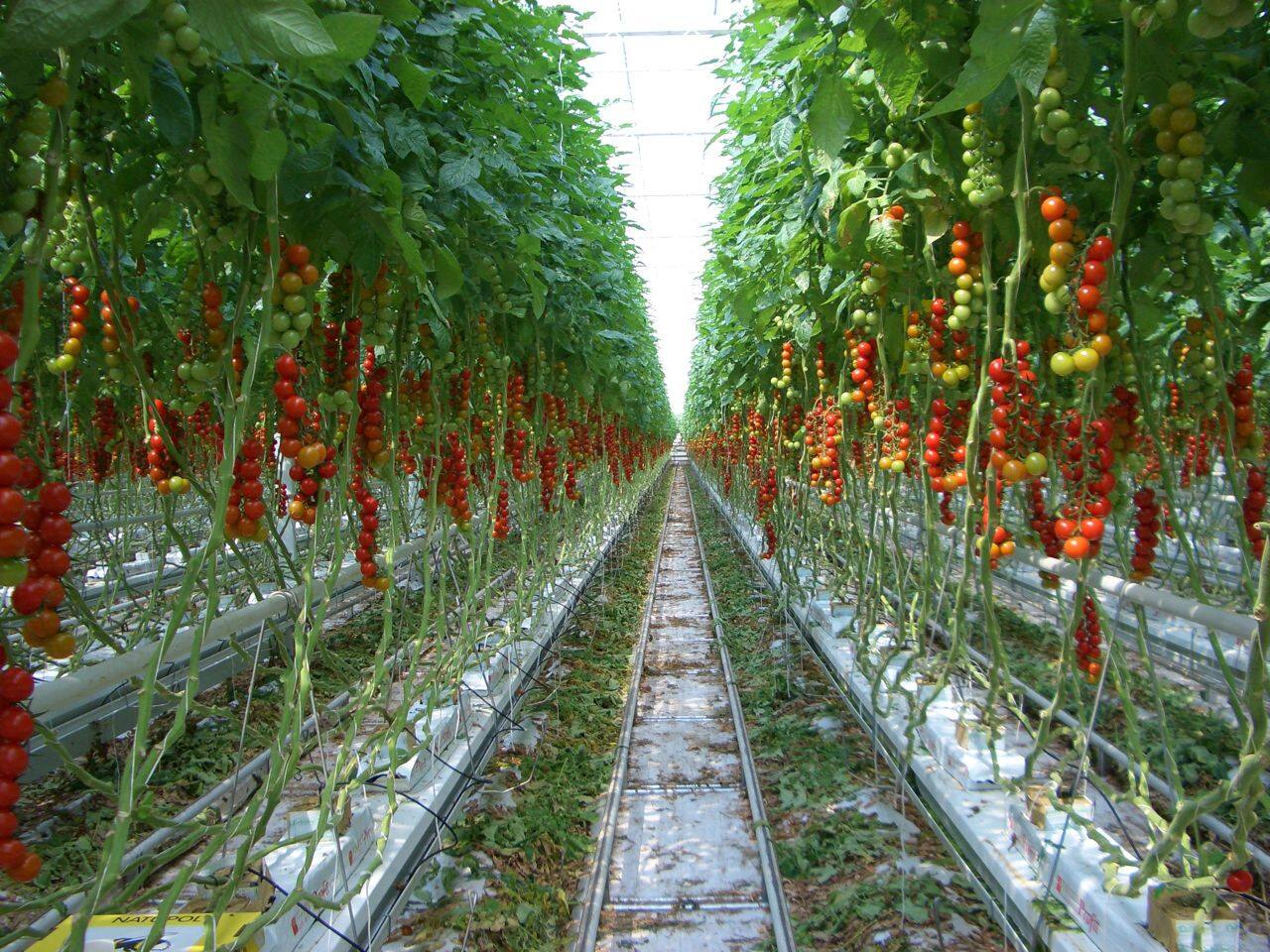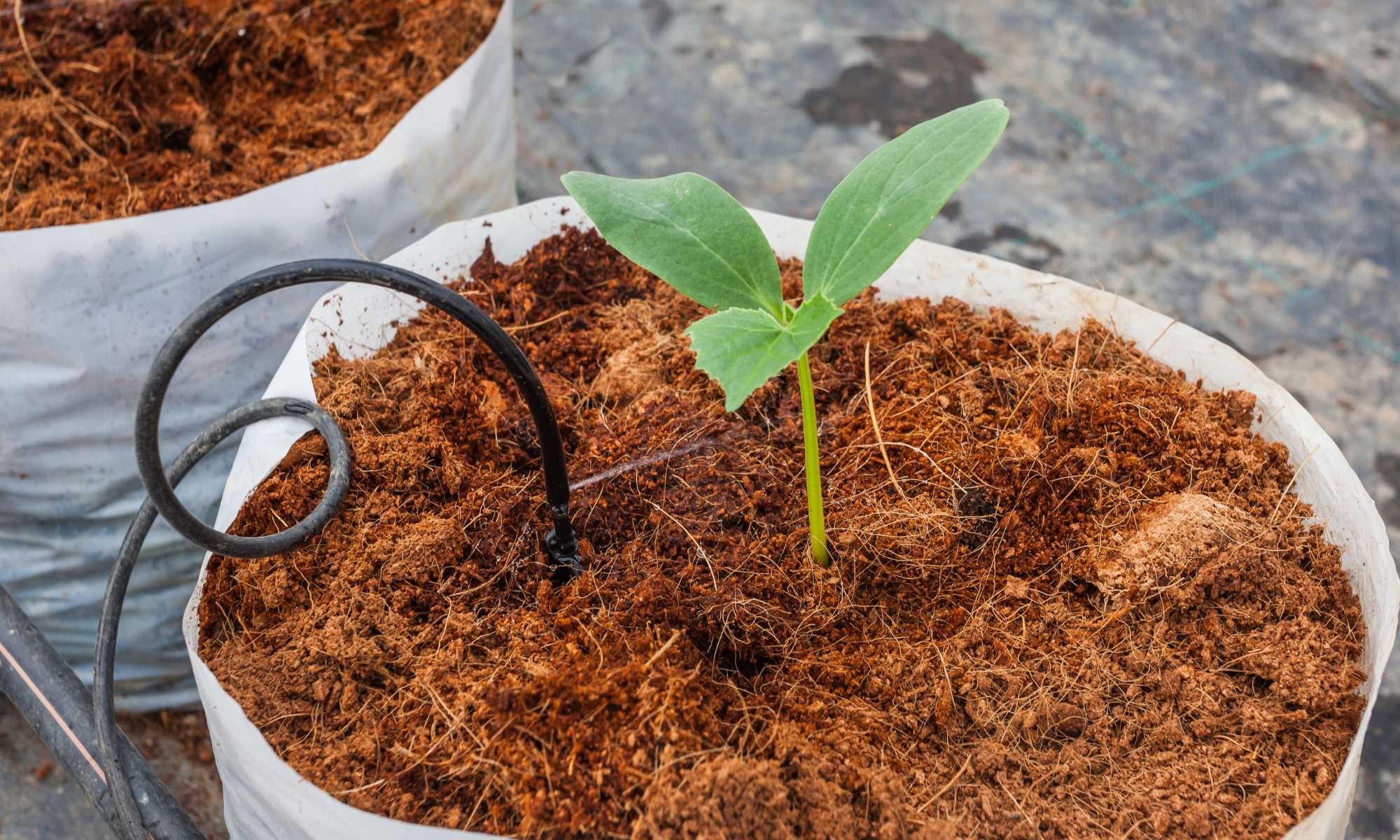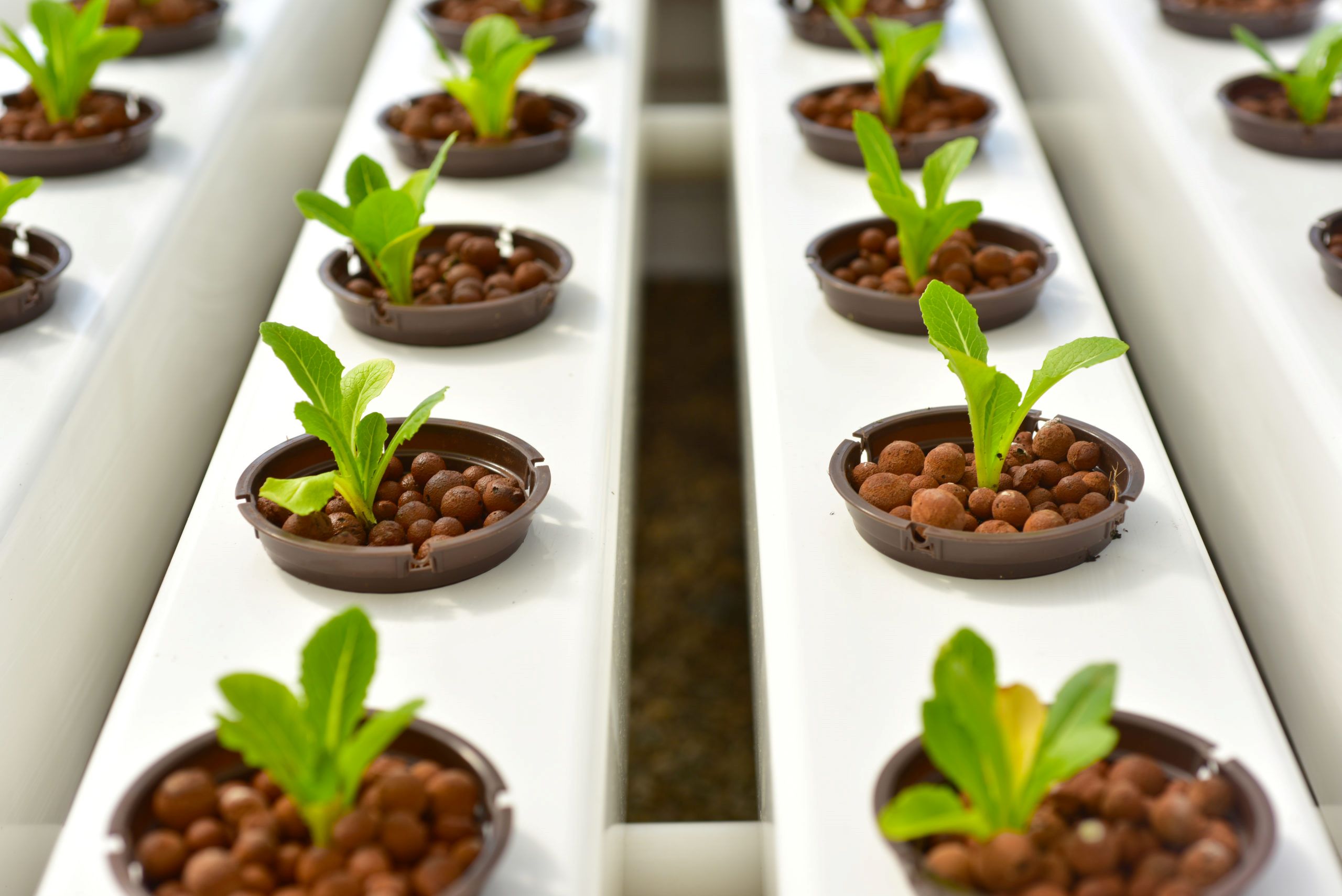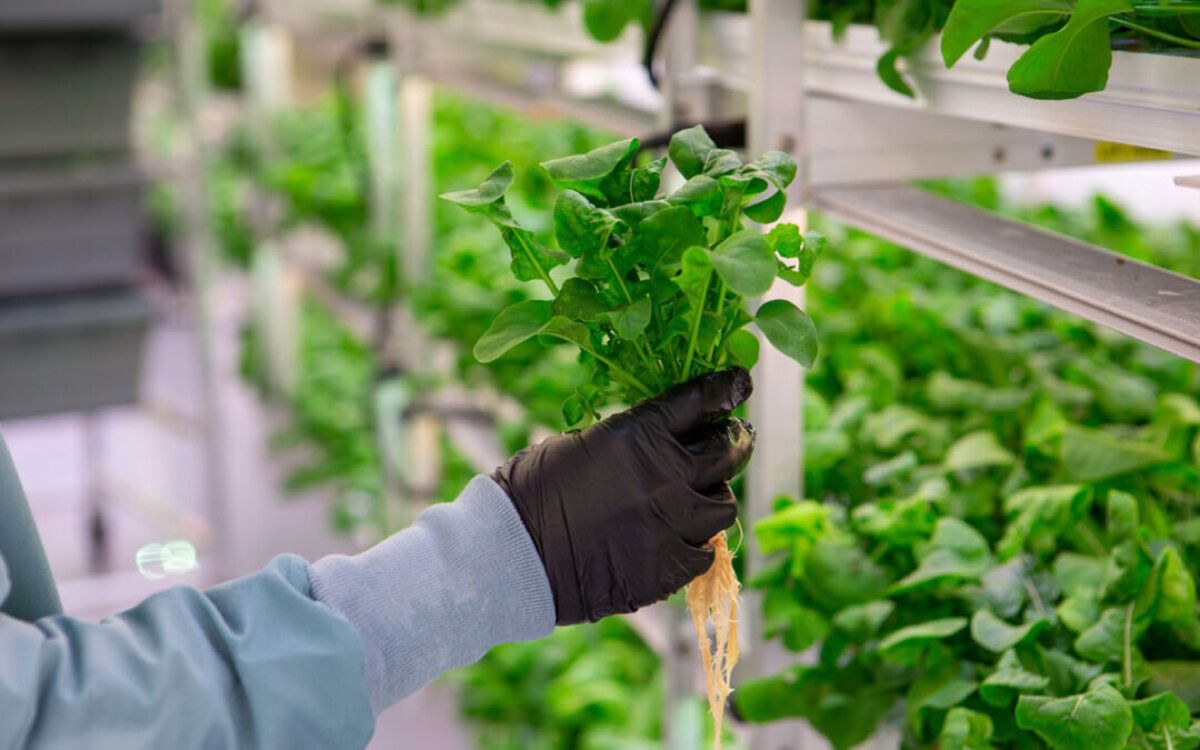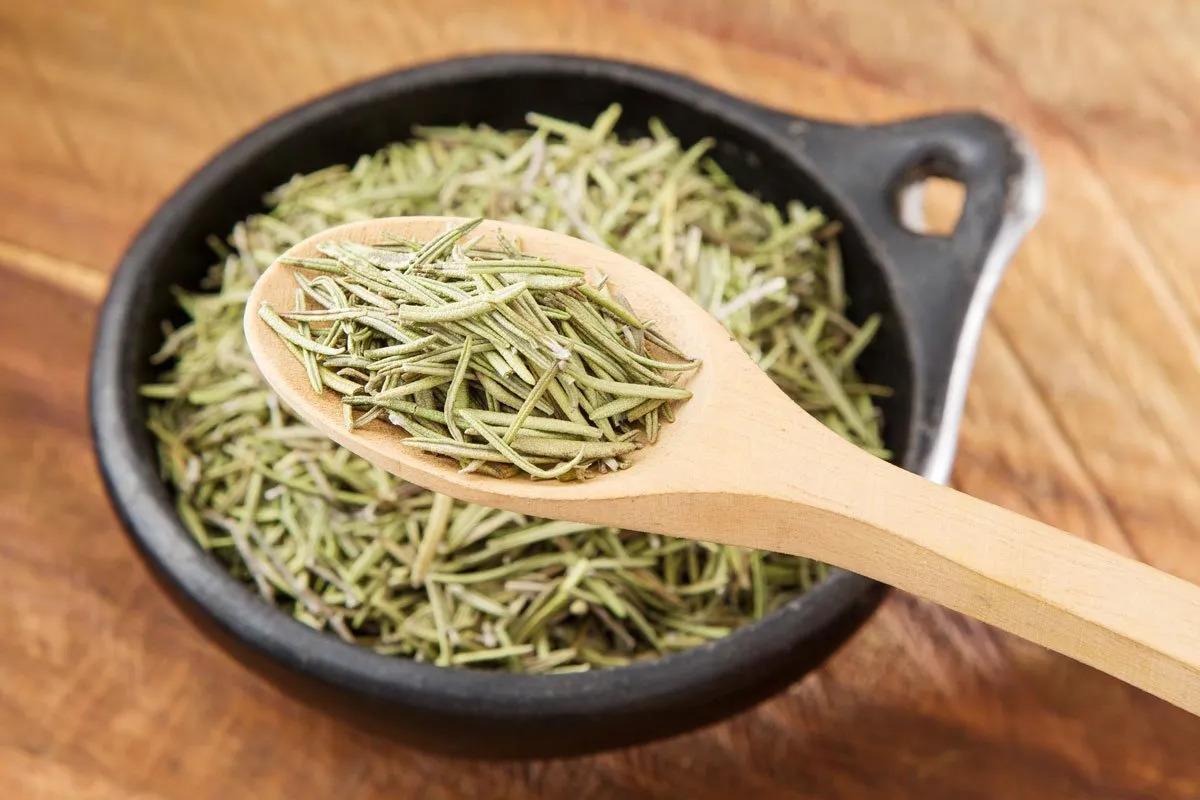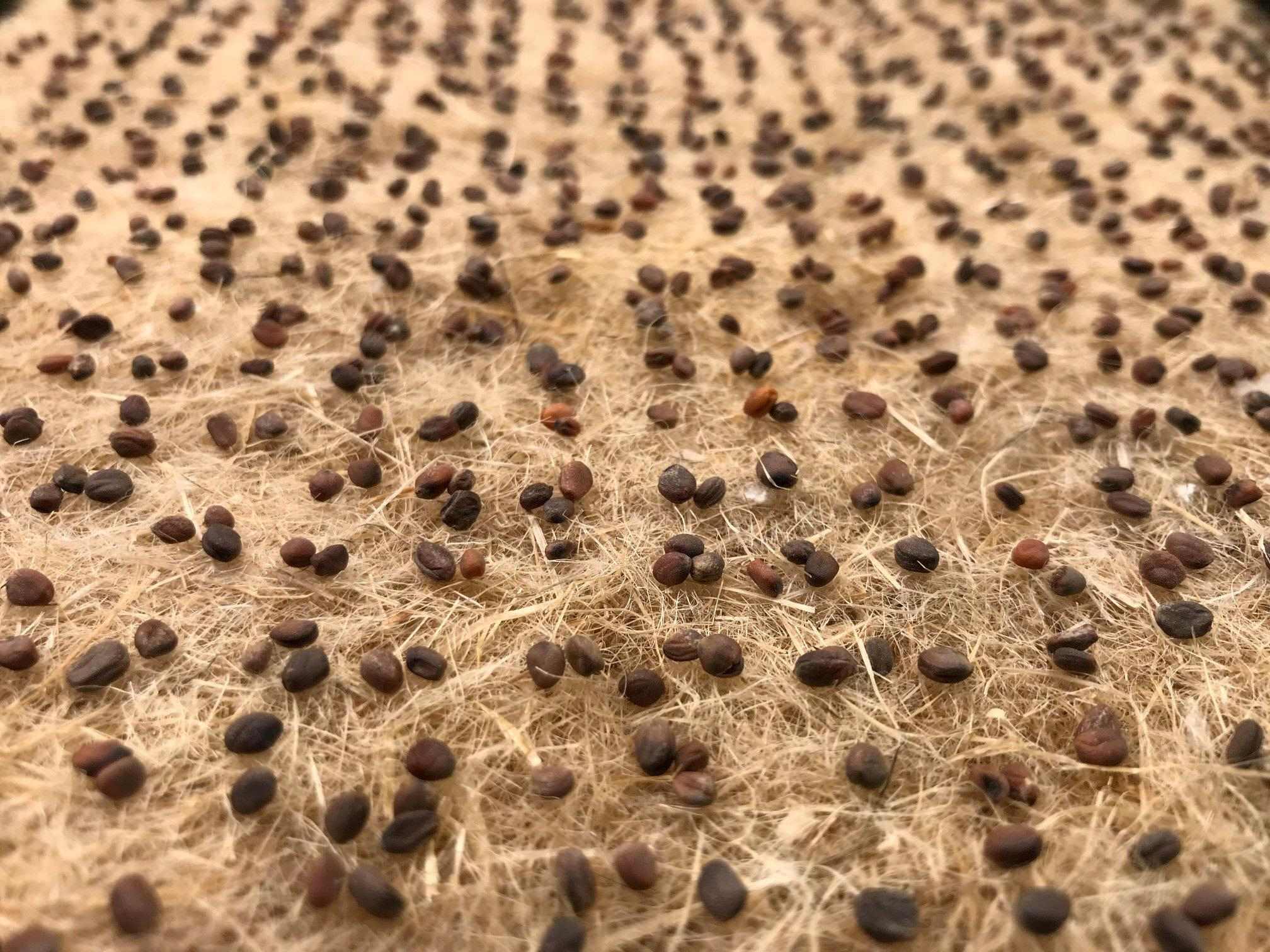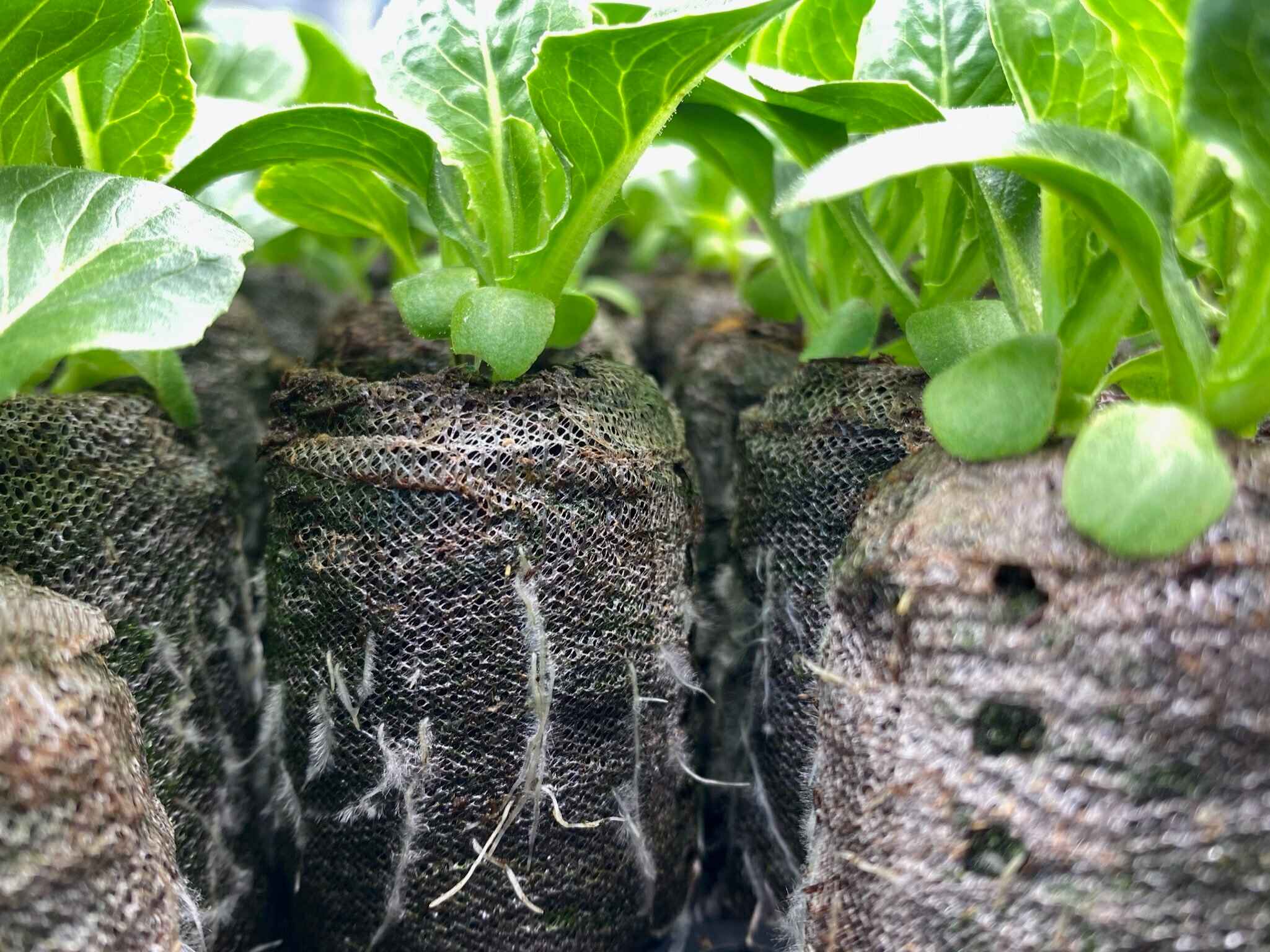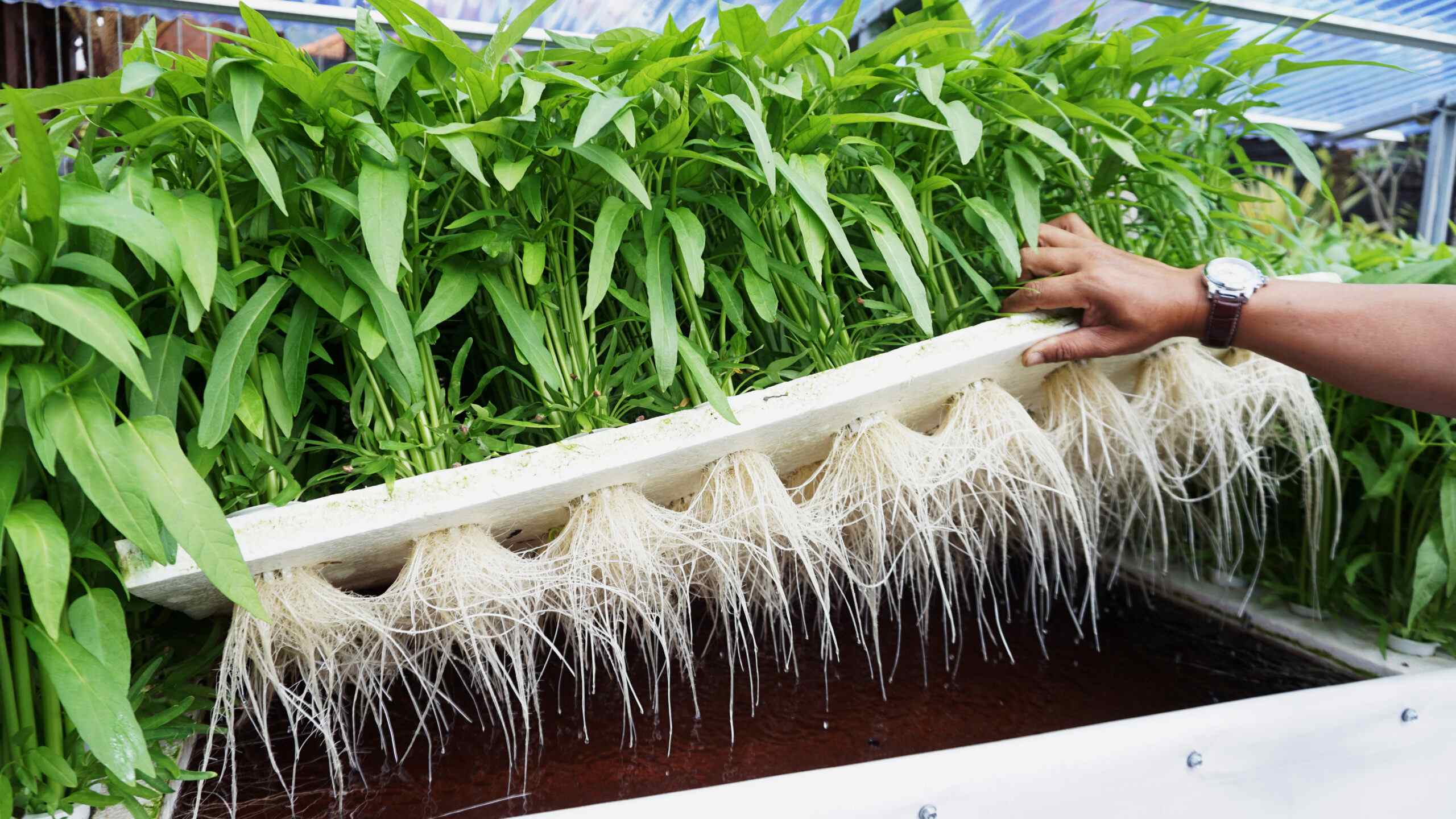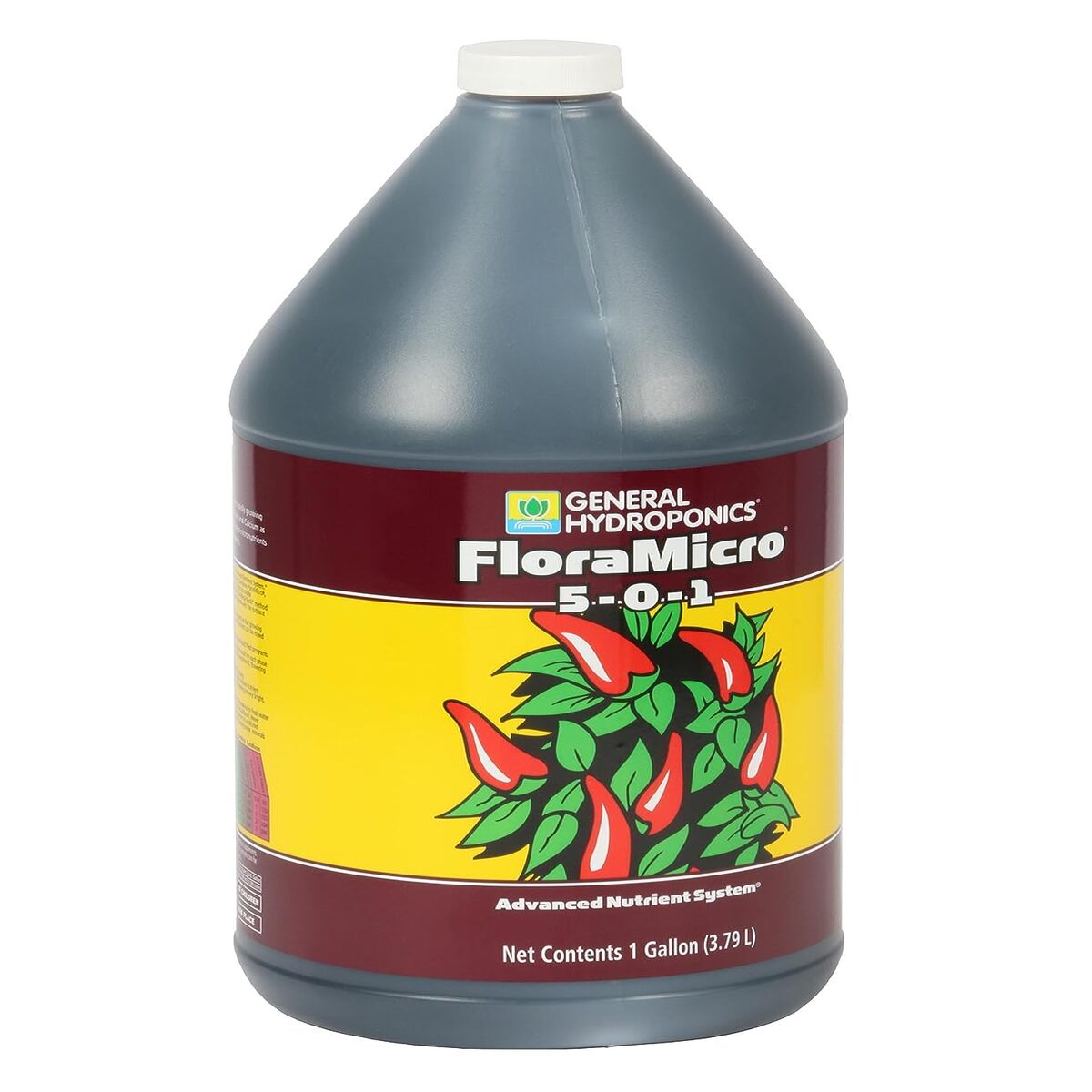Home>Gardening Tips and Tricks>Eco-Friendly Gardening>How To Use Air Stones In Hydroponics


Eco-Friendly Gardening
How To Use Air Stones In Hydroponics
Published: September 22, 2023
Learn how to incorporate air stones into your hydroponic system for eco-friendly gardening. Enhance oxygen levels for healthier roots and more robust plant growth.
(Many of the links in this article redirect to a specific reviewed product. Your purchase of these products through affiliate links helps to generate commission for Chicagolandgardening.com, at no extra cost. Learn more)
Table of Contents
- Introduction
- What is Hydroponics?
- What are Air Stones?
- Benefits of Using Air Stones in Hydroponics
- How to Choose the Right Air Stone for Your Hydroponic System
- Setting Up an Air Stone in Your Hydroponic System
- Maintaining and Cleaning Your Air Stone
- Troubleshooting Common Issues with Air Stones in Hydroponics
- Conclusion
Introduction
Welcome to the world of hydroponics, an innovative and sustainable gardening practice that is rapidly gaining popularity among eco-conscious gardeners. Hydroponics allows plants to grow without soil, using a nutrient-rich water solution as their primary source of sustenance. While this method of gardening offers numerous benefits, it also presents specific challenges that need to be addressed for successful plant growth and development.
One of the key factors in hydroponics is providing adequate oxygenation to the plant roots. This is where air stones come into the picture. Air stones are small, porous stones that help to infuse oxygen into the nutrient solution, promoting healthier root systems and enhancing plant growth. In this article, we will explore the benefits of using air stones in hydroponics, how to choose the right air stone for your system, and how to properly set up and maintain them to ensure optimal performance.
Whether you are a seasoned hydroponics enthusiast or just starting on your eco-friendly gardening journey, understanding the importance of air stones and how to effectively incorporate them into your hydroponic system is crucial for achieving successful and sustainable results. So, let’s dive in and discover the wonders that air stones can bring to your hydroponic garden!
What is Hydroponics?
Hydroponics is a method of growing plants without the use of soil. Instead, plants are cultivated in a nutrient-rich water solution that provides all the essential elements needed for their growth and development. This innovative gardening technique is gaining popularity for its numerous advantages over traditional soil-based gardening.
Hydroponics offers greater control over plant nutrition, eliminating the guesswork involved in soil-based gardening. By providing a nutrient solution directly to the plant roots, growers can ensure that plants receive the perfect balance of nutrients at all times, resulting in faster growth rates and higher yields.
Additionally, hydroponics allows for precise control of environmental factors such as temperature, humidity, and lighting. This enables growers to create the ideal conditions for plant growth, regardless of external factors or seasonal limitations. The controlled environment also reduces the risk of pests and diseases, resulting in healthier plants that require fewer chemical interventions.
Another significant advantage of hydroponics is its water efficiency. Compared to traditional soil-based gardening, hydroponics uses up to 90% less water. This is because water is recirculated in a closed system, preventing wastage and minimizing water consumption. For regions with limited access to water or experiencing drought conditions, hydroponics offers a sustainable solution to continue gardening and cultivating fresh produce.
Hydroponics is not only limited to large-scale commercial operations. It is also a viable option for home gardeners, as it can be set up in small spaces, such as balconies or indoor areas. By harnessing the power of hydroponics, gardeners can enjoy a year-round supply of fresh herbs, vegetables, and fruits, regardless of climate or geographical limitations.
Overall, hydroponics is revolutionizing the way we grow plants by providing a sustainable and efficient gardening method. With its ability to maximize plant growth, conserve water, and create a controlled environment, hydroponics is paving the way for greener and more sustainable agriculture practices.
What are Air Stones?
Air stones are small, porous stones that play a crucial role in oxygenating the nutrient solution in hydroponic systems. They are typically made of durable materials such as ceramic or porous rock, ensuring long-lasting performance and efficient diffusion of oxygen.
The primary function of air stones is to infuse oxygen into the nutrient solution, creating a well-aerated environment for the plant roots. They work by breaking down large bubbles of air into smaller ones, increasing the surface area contact between the air and the water. This process, known as aeration, helps deliver oxygen to the roots and facilitates the exchange of gases between the roots and the surrounding solution.
By providing a constant supply of oxygen to the plant roots, air stones promote better absorption of nutrients and enhance overall plant health. Oxygenation is especially important in hydroponics, as plant roots are exposed to water continuously, which can lead to oxygen deprivation if not properly aerated.
In addition to oxygenation, air stones also help in preventing the formation of stagnant zones within the nutrient solution. These stagnant areas can lead to the accumulation of harmful bacteria and algae growth, negatively impacting plant growth. The bubbling action created by air stones ensures proper circulation of the nutrient solution, reducing the risk of disease and maintaining a healthy root environment.
Air stones come in various shapes and sizes. The choice of air stone depends on the size of the hydroponic system and the types of plants being grown. Smaller air stones are more suitable for smaller systems, while larger air stones are recommended for larger setups. It is important to consider the oxygen requirement of the plants and the flow rate of the air pump when selecting the right air stone for your hydroponic system.
Overall, air stones are invaluable accessories in hydroponics, ensuring adequate oxygenation and preventing the build-up of harmful pathogens. By incorporating air stones into your hydroponic system, you can create an optimal growing environment for your plants and maximize their growth potential.
Benefits of Using Air Stones in Hydroponics
Using air stones in hydroponics offers several key benefits that contribute to the overall success and health of your plants.
1. Increased Oxygenation: Air stones provide a constant supply of oxygen to the plant roots, ensuring they receive the necessary oxygen for optimal growth. Well-oxygenated roots lead to improved nutrient uptake, stronger root development, and overall healthier plants.
2. Enhanced Nutrient Absorption: When the roots have ample oxygen, they can efficiently absorb the nutrients present in the nutrient solution. This results in faster growth rates, increased yields, and improved overall plant health.
3. Prevention of Root Diseases: By promoting oxygenation and preventing stagnant zones, air stones help reduce the risk of root diseases caused by pathogens and harmful bacteria. This leads to healthier plants with lower susceptibility to diseases.
4. Improved Circulation: The bubbling action created by air stones ensures proper circulation of the nutrient solution, preventing the accumulation of salts and maintaining a well-mixed and balanced solution throughout the system.
5. Alleviation of Waterlogged Roots: Hydroponic systems can sometimes experience a buildup of water around the roots, leading to waterlogged conditions. Air stones help prevent this issue by increasing oxygen levels around the roots and facilitating proper drainage and aeration.
6. Environmental Control: The use of air stones allows growers to have better control over the environmental conditions in the hydroponic system. Oxygenation helps regulate the temperature of the nutrient solution, preventing it from becoming too warm or stagnant.
7. Versatility: Air stones can be used in various types of hydroponic systems, including deep water culture (DWC), nutrient film technique (NFT), and ebb and flow systems. This makes them a versatile tool that can be incorporated into different setups for optimal oxygenation.
8. Increased Plant Resilience: Plants grown in well-oxygenated environments are better equipped to handle stress factors such as temperature fluctuations or nutrient imbalances. The enhanced root health and nutrient absorption provided by air stones contribute to overall plant resilience.
Incorporating air stones into your hydroponic system offers a range of benefits that promote optimal plant growth and overall system health. With improved oxygenation, enhanced nutrient absorption, and prevention of root diseases, using air stones is a must for any serious hydroponic gardener.
How to Choose the Right Air Stone for Your Hydroponic System
Choosing the right air stone for your hydroponic system is crucial to ensure effective oxygenation and optimal plant growth. Consider the following factors when selecting an air stone:
1. Size and Shape: Air stones come in various sizes and shapes. Smaller air stones are suitable for small-scale setups, while larger ones are required for larger systems. Consider the size of your hydroponic system and the number of plants you are growing to determine the appropriate size of the air stone. Additionally, choose a shape that allows for even distribution of bubbles throughout the system.
2. Porosity: The porosity of the air stone affects its oxygenation capabilities. Look for air stones with fine pores to ensure efficient diffusion of oxygen into the nutrient solution. High-quality ceramic or porous rock air stones are recommended for optimal performance.
3. Oxygen Requirement of Plants: Different plants have varying oxygen needs. Some plants may require more oxygen than others to thrive. Consider the oxygen requirement of the specific plants you are growing and choose an air stone that can provide sufficient oxygen to meet their needs.
4. Air Pump Output: Match the output of your air pump with the airflow requirements of the air stone. Ensure that the air stone you choose can handle the volume of air provided by your air pump. Insufficient airflow may lead to inadequate oxygenation, while excessive airflow can result in inefficient bubble formation.
5. Durability and Longevity: Invest in high-quality air stones that are durable and can withstand continuous use. Look for options that are resistant to clogging and easy to clean, as these factors contribute to the longevity and performance of the air stone.
6. Maintenance and Cleaning: Consider the ease of maintenance and cleaning when selecting an air stone. Opt for options that can be easily disassembled and cleaned to remove any buildup of mineral deposits or contaminants, ensuring optimal performance over time.
7. Budget: Consider your budget when choosing an air stone. While it is important to invest in a quality air stone, there are options available at different price points to suit your needs.
By considering these factors and choosing the right air stone for your hydroponic system, you can ensure efficient oxygenation, promote healthy root development, and achieve optimal plant growth and yields.
Setting Up an Air Stone in Your Hydroponic System
Setting up an air stone in your hydroponic system is a straightforward process that requires a few simple steps. Follow these guidelines to ensure proper installation and efficient oxygenation:
1. Choose the Right Location: Select a suitable location in your hydroponic system to place the air stone. Ideally, it should be positioned near the roots of the plants to provide direct oxygenation. Ensure that the air stone is securely placed and will not be disrupted by the movement of the nutrient solution or plant roots.
2. Connect the Air Stone to the Air Pump: Attach one end of the air tubing to the air pump and the other end to the air stone. Ensure that the connections are secure to prevent air leaks. You may use connectors or clamps to secure the tubing in place.
3. Place the Air Stone in the Nutrient Solution: Submerge the air stone into the nutrient solution, ensuring that it is fully immersed. For deep water culture systems, the air stone should be positioned just below the water surface. In other systems, make sure the air stone is placed in an area where the bubbles can circulate and reach the plant roots.
4. Turn on the Air Pump: Once the air stone is properly positioned, connect the power supply to the air pump and turn it on. Verify that the air is flowing through the air tubing and bubbles are being released from the air stone. Adjust the airflow if necessary to achieve the desired bubble size and distribution.
5. Monitor and Fine-tune: Regularly monitor the operation of the air stone and check for any air leaks or disruptions in the airflow. Adjust the air pump as needed to maintain consistent oxygenation. Observe the plants for signs of improved growth and health, indicating proper oxygenation of the root system.
6. Consider Air Stone Placement in Multiple Systems: If you have multiple hydroponic systems connected to a single air pump, it may be beneficial to use individual air stones for each system. This allows for more controlled oxygenation and reduces the risk of any potential contamination from one system to another.
By following these steps, you can ensure the effective setup of an air stone in your hydroponic system. Proper installation and positioning of the air stone will contribute to improved oxygenation of the nutrient solution, resulting in healthier plant growth and higher yields.
Maintaining and Cleaning Your Air Stone
Maintaining and cleaning your air stone is essential to ensure its optimal performance and longevity. Over time, mineral deposits, algae, and other impurities can build up on the surface of the air stone, reducing its effectiveness. Here are some guidelines for effectively maintaining and cleaning your air stone:
1. Regular Inspection: Periodically inspect your air stone for any visible signs of clogging or blockage. This can include a decrease in bubble size, reduced airflow, or discoloration of the stone. Regular inspections allow you to identify issues early on and take necessary action.
2. Cleaning Schedule: Establish a regular cleaning schedule based on the specific requirements of your hydroponic system. This can range from weekly to monthly cleanings, depending on factors such as water quality and the frequency of nutrient solution changes.
3. Remove the Air Stone: Before cleaning the air stone, disconnect the power supply to the air pump and remove the air stone from the nutrient solution. Carefully detach the air tubing from the air stone, making sure not to damage the connections.
4. Soak in Cleaning Solution: Prepare a cleaning solution by using a mild detergent or a mixture of water and hydrogen peroxide. Place the air stone in the cleaning solution, ensuring it is fully submerged. Allow it to soak for the recommended time specified by the manufacturer or for at least 30 minutes.
5. Scrub and Rinse: After soaking, use a soft brush or toothbrush to gently scrub the air stone, focusing on areas with visible buildup or blockage. Be careful not to use any abrasive materials that can damage the stone. Rinse the air stone thoroughly with clean water to remove any cleaning solution or loosened debris.
6. Disinfection: To prevent the growth of harmful bacteria or pathogens, consider disinfecting the air stone periodically. This can be done by soaking the air stone in a sanitizing solution containing bleach or using specialized disinfecting products designed for air stones. Follow the manufacturer’s guidelines for proper dilution and contact time.
7. Dry and Reassemble: After cleaning and rinsing, allow the air stone to air dry completely before reassembling it. Ensure that all components, including the air tubing and connectors, are also thoroughly dried to prevent the growth of mold or bacteria. Once dry, reattach the air tubing to the air stone and place it back into the hydroponic system.
8. Regular Maintenance: In addition to periodic cleanings, regularly inspect the performance of your air stone. Monitor the bubble size, flow rate, and overall oxygenation of the nutrient solution. Make necessary adjustments to the air pump or clean the air stone if any issues arise.
By implementing a regular maintenance and cleaning routine for your air stone, you can prolong its lifespan and ensure optimal oxygenation in your hydroponic system. Cleaner air stones lead to healthier root systems, improved nutrient uptake, and ultimately, thriving plants in your hydroponic garden.
Troubleshooting Common Issues with Air Stones in Hydroponics
While air stones are essential for ensuring proper oxygenation in hydroponic systems, they can sometimes encounter issues that affect their performance. By troubleshooting these common problems, you can address them promptly and maintain optimal oxygen levels for your plants. Here are some common issues and their solutions:
1. Reduced Airflow: If you notice a decrease in airflow or smaller bubbles from your air stone, it could indicate a clog or blockage. Check the air tubing and connections for any kinks, obstructions, or leaks. Clean the air stone and ensure it is free from debris or mineral buildup. If necessary, replace the air stone or clean the air pump’s air filter.
2. Uneven Bubble Distribution: Uneven bubble distribution can occur if the air stone is not properly positioned or if there are restrictions in the airflow. Ensure that the air stone is fully submerged in the nutrient solution and well-secured. Check the air tubing for any kinks, bends, or obstructions that may impede the flow of air. Consider using an air manifold or splitter to distribute the air evenly in multi-system setups.
3. Excessive Noise or Vibration: If your air stone is making excessive noise or creating vibrations, it may indicate an issue with the air pump or a loose connection. Check the air pump for any mechanical issues, such as a damaged diaphragm or worn-out parts. Tighten all connections and make sure the air tubing is securely attached to the air stone and air pump. Consider using vibration-absorbing materials to reduce noise and vibrations.
4. Algae Growth: Algae can sometimes grow on the surface of the air stone, affecting its performance. To prevent algae growth, ensure that the nutrient solution is properly balanced and light exposure is minimized. Regularly clean the air stone and soak it in a hydrogen peroxide solution to inhibit algae growth. In certain cases, using an air stone with a finer pore size can also reduce the risk of algae buildup.
5. Mineral Buildup: Over time, minerals from the nutrient solution can accumulate on the surface of the air stone, clogging the pores and reducing its effectiveness. Regularly clean the air stone by soaking it in a mild detergent solution or using a specialized cleaning solution. Use a soft brush or toothbrush to gently scrub away any mineral deposits. If the buildup is severe, consider replacing the air stone with a new one.
6. Poor Oxygenation: If your plants show signs of poor oxygenation, such as wilting or slow growth, it may indicate an issue with the air stone. Check the airflow and bubble distribution to ensure that sufficient oxygen is reaching the roots. Clean or replace the air stone if necessary. Also, consider adjusting the air pump’s output to provide more oxygenation to the nutrient solution.
By troubleshooting these common issues with air stones in hydroponics, you can ensure optimal performance and oxygenation in your system. Regular maintenance, cleaning, and monitoring will help address these problems promptly, allowing your plants to thrive in a well-oxygenated and healthy root environment.
Conclusion
Air stones are invaluable tools for any hydroponic gardener looking to optimize oxygenation and promote healthy plant growth. By infusing the nutrient solution with oxygen, air stones ensure that plant roots have access to the vital element they need to thrive. The benefits of using air stones in hydroponics are numerous, including increased oxygenation, enhanced nutrient absorption, prevention of root diseases, improved circulation, and environmental control.
When selecting an air stone, consider factors such as size, porosity, oxygen requirement of plants, air pump output, durability, and maintenance. Proper placement and installation of the air stone in your hydroponic system are critical to ensure efficient oxygenation. Regular maintenance, including cleaning and inspection, is necessary to keep the air stone performing at its best.
However, even with proper maintenance, issues with air stones can arise. Troubleshooting common problems, such as reduced airflow, uneven bubble distribution, excessive noise or vibration, algae growth, mineral buildup, and poor oxygenation, is essential to address any issues promptly and maintain optimal performance of the air stone.
Incorporating air stones into your hydroponic system brings numerous benefits, offering improved plant health, growth rates, nutrient absorption, and overall system resilience. With their contribution to the advancement of sustainable gardening practices, air stones are a vital component of eco-friendly gardening and a key tool for successful hydroponic cultivation.
So, whether you are a beginner or experienced hydroponic gardener, consider integrating air stones into your system and experience the wonders they bring to your plants’ growth and overall gardening success.
